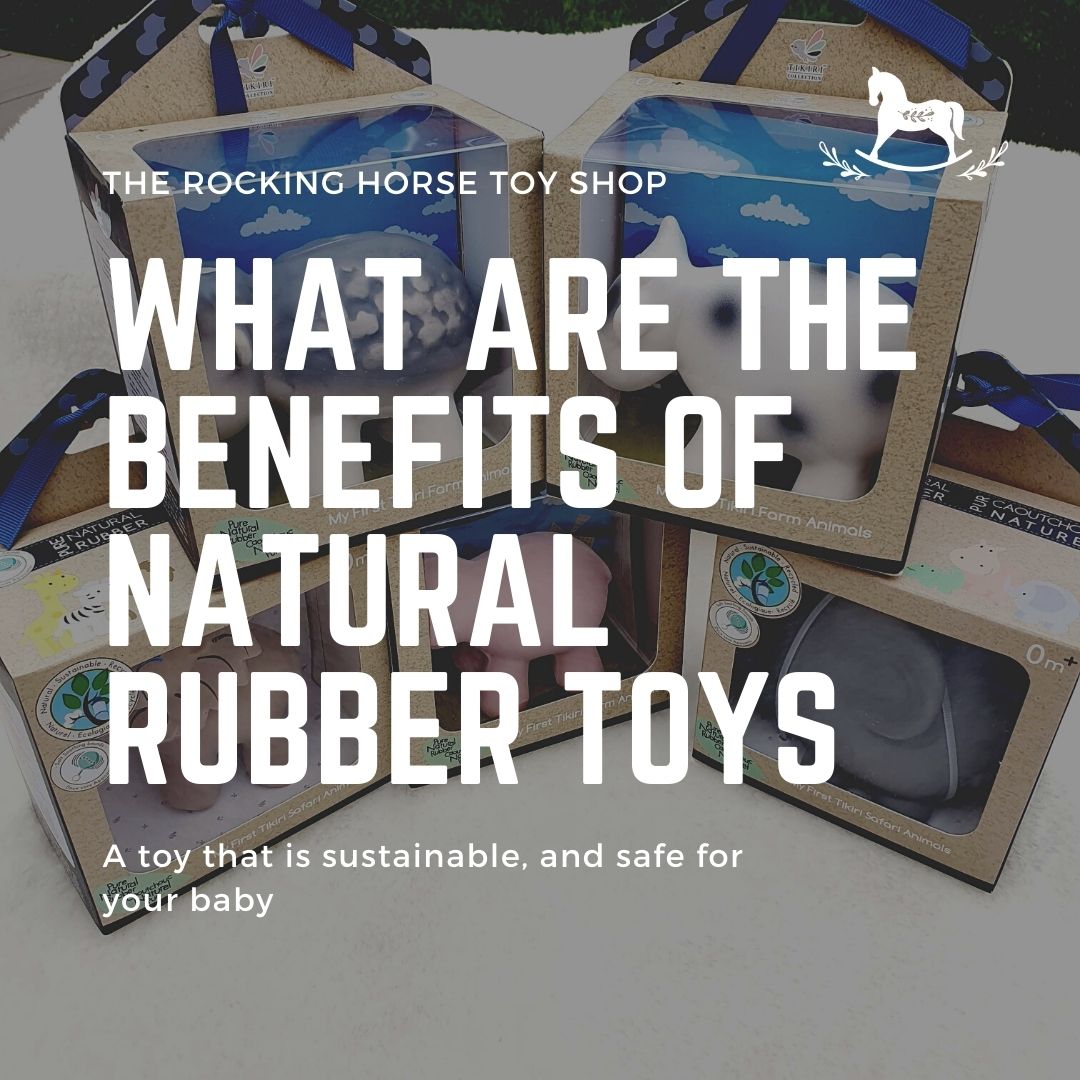My Cart
Your Cart is Currently Empty

As it becomes more common for baby shops and retailers like us sourcing sustainable materials when it comes to our baby and toddlers’ toys and items, natural rubber is another sustainable resource that many manufacturers opt for to create particularly baby and toddlers’ bathing and teething toys. We are here to help you understand more!

According to the freedictionary.com, natural rubber is defined as an elastic material obtained from the latex sap of trees (especially trees of the genera Hevea and Ficus) that can be vulcanized and finished into a variety of products.
It is believed that natural rubber is the oldest type of rubber. However, it still accounts for more than 40% of the total volume, currently, a little more than ten million tonnes per year and its usage continues to grow. (Refer to this article)
Natural rubber is obtained from latex whitish milky fluid containing proteins, starch, alkaloids, etc., that is produced by many plants in the world. Only around 12.5% of the species of plants that can produce latex contain rubber. The function of rubber is not fully known scientifically but is believed to be able to aid plants to heal after being damaged and it works kind of like a bandaid to cover up the wound and stop it from bleeding. (refer to this article)
In terms of the chemical components, according to this article, natural rubber is a naturally occurring high-cis poly-isoprene. Approximately 94% will be poly-isoprene with the rest made up of some naturally occurring resins and proteins, together with small amounts of ash, dirt, and water. It is the resins and proteins together with the high-cis poly-isoprene which gives natural rubber its unique properties.
According to this useful article, the term ‘latex’ basically describes any polymer in a water-based liquid or viscous state. The word latex by itself does not refer to natural rubber latex.
What we have been referring to above is natural rubber latex, which comes from the Hevea tree’s white sap. Natural rubber is dry natural rubber, that is basically natural rubber latex that has been dried into bales that can be more easily transported and stored. It is believed that the extrusion process can generally control dimensions more accurately than a process using liquid natural rubber latex which means we can often hold tighter tolerances on our extruded natural rubber tubing and profiles.
As explained above, natural rubber comes from latex of the Hevea plants, which contains about 30% poly(cis-1,4-isoprene). Latex is harvested by a “tapping” procedure after the bark of the plants is notched diagonally, which yields 100 to 200 ml latex resin within 3 h. (Refer to this academic article) https://aem.asm.org/content/71/6/2803
This Youtube Video provides a great insight on how the latex is ‘tapped’ from the tree in Thailand.
It is found that more than 70% of this rubber was produced in only three countries, which are Thailand, Indonesia and Malaysia. Amazingly, the United States, China and Japan together purchase 40% of all natural rubber. And 75% of the natural rubber is actually used for production of automobile tires (refer to this article), while others suggest 50% of the natural rubber is used for high performance tires for automobile, racing, and aviation industry (Refer to this article)
It’s also used in hoses, automotive parts, foam mattresses, and battery boxes. Because of its adhesive ability, natural rubber is also found to be used for new roads, and as part of shoe soles. And a small amount of latex is reduced down to rubber solution to make products like latex gloves or to use as a coating. (Refer to this article.)
Nowadays, natural rubber is seen as a sustainable material used to create baby items and toys, such as bath toys and teething toys.
Because natural rubber is a natural resource harvested from plants, for most human beings it is a safe material to use. However, in the modern age, we seem to be developing allergies for pretty much everything and many types of food. So the proteins in the rubber made from Hevea brasiliensis can cause severe allergies in certain people. (Refer to this article.)
Yes it is, compared to plastic which will remain in its form in the environment for thousands of years, natural rubber is a much better choice for elastic and adhesive material. However, it is a slower process of biodegradation (according to this article). Of course, more research is needed to find better ways to create and allow the natural rubber to be more biodegradable.
Natural rubber toys are:
They are hundred times better than using plastic when it comes to things like a dummy (pacifier) or bath toy for your children.
Baby products made of natural rubber are certainly unharmful for your children and safe for them to chew. Natural rubber is environmentally sustainable in the majority of the production situations.
Albeit its benefits and sustainability, natural rubber has its threats, such as its vulnerability of fighting against diseases as these Hevea trees grow in a single species plantation area, and the question of its supply due to the limited countries that are growing them in the world. Alternatives to Hevea trees are certainly something suppliers and scientists are seeking answers for. (Refer to this article)
As the years go by, scientists are thriving to seek alternative natural resources to replace plastic as close as possible. We all know plastic is harmful to our environment, hence as parents we should be conscious of not consuming plastic as much as we can in our daily life. One area that we can really contribute is choosing the right toys for our babies and children. By choosing natural rubber products over plastic, you are doing the environment and your future generation something good.
Interested in getting some natural rubber items for your baby? Shop our collection of natural rubber baby and bath toys here!